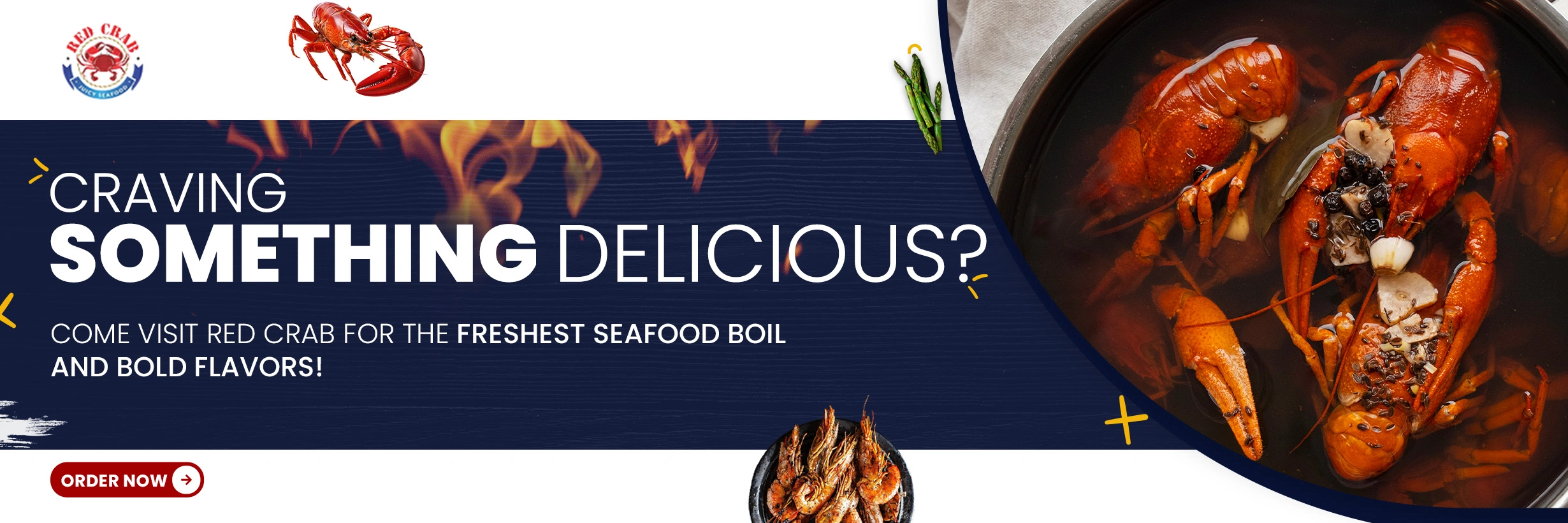Understanding the differences between Crab and Lobster – Healthy Food Choices
When it comes to seafood, the choices are endless. Seafood lovers often find themselves stuck in a delightful dilemma when it comes to choosing between crustaceans. However, two popular options that often leave people scratching their heads are crab and lobster. Both crustaceans are popular choices in various cuisines around the world. They also offer a delicious, luxurious, and nutritious dining experience for you. These delicious crustaceans may look similar, but they have some key differences to make them stand out. So, let’s dive into the ocean of knowledge and understand the difference between crab and lobster while helping you make healthier food choices.
Table of Contents
Crab vs. Lobster: The Basics
Crab and lobster, both belong to the same family; however, some characteristics set them apart. Crabs have a broad, flat body and walk sideways. Whereas, lobsters have a longer, more cylindrical body and move in a forward direction. Remember that understanding these basic differences can help you appreciate their unique flavors and textures so much more. So, let’s find out more.
Shell Shock
One of the key differences of crab and lobster is their outer shells. Lobsters boast a hard, thick exoskeleton that protects their soft meat inside. On the other hand, crabs have a more delicate and varied shell, with some having a harder exterior while others are softer. Moreover, when it comes to healthy eating, choosing soft-shell crabs might be a better option as they tend to be lower in calories.
Flavor Profiles
The flavor of crab and lobster depends on personal preference. Crab meat is often known as sweet and delicate, with a hint of brininess. However, the texture may vary with some types of crab meat being tender and flaky, while others are more robust. Lobster, on the other hand, is known for its succulent, buttery taste and texture that ranges from tender to slightly chewy.
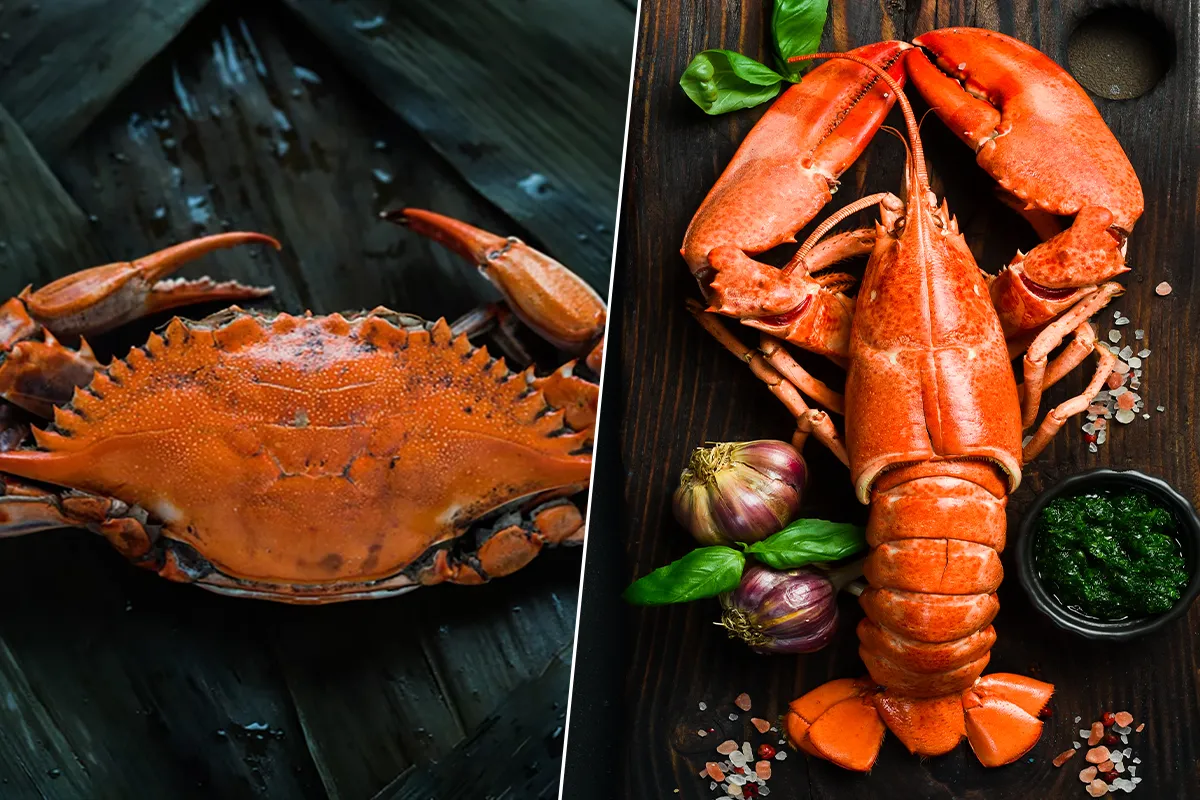
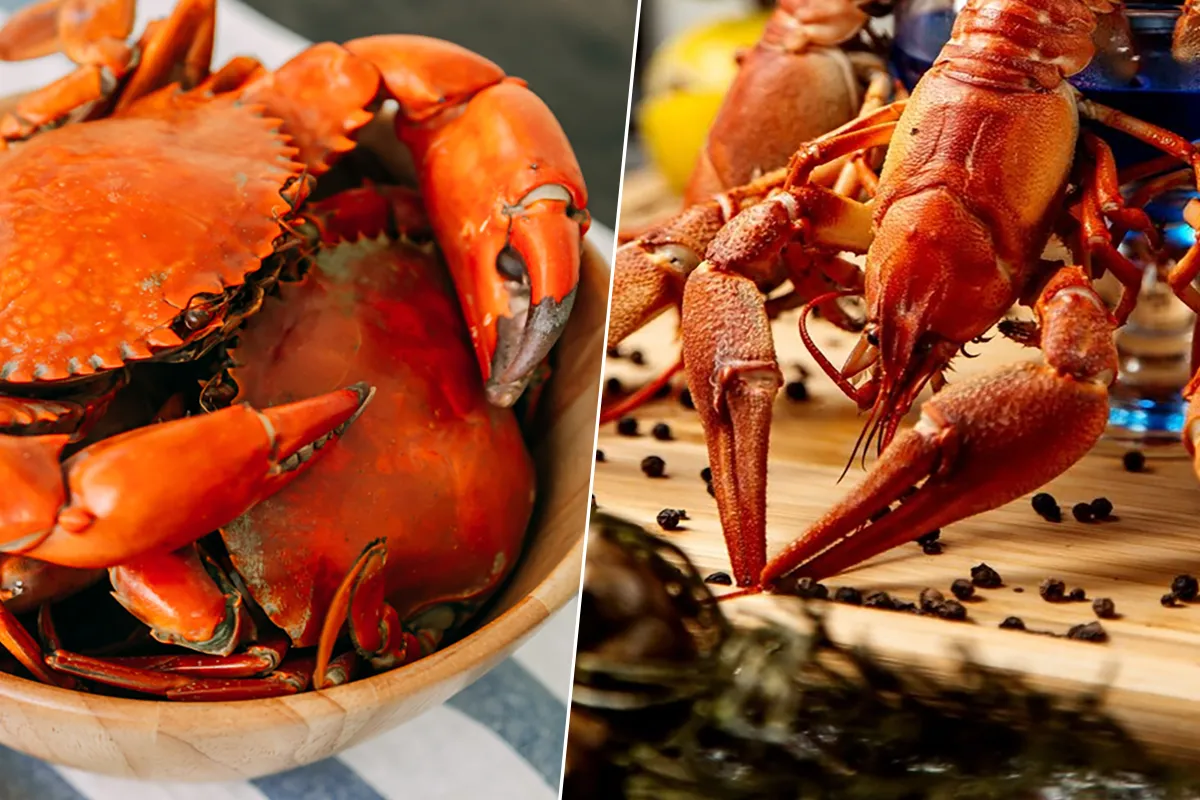
Clawing their Way In
Crab and lobster claws also set them apart from each other. Lobsters typically have larger, meatier claws to pack a flavorful punch. Crabs, however, have a mix of larger and smaller claws. Furthermore, the good news for seafood eaters is that crab claws often contain a good amount of succulent meat with fewer calories compared to lobster claws.
Meat Matters
Both crab and lobster meats are rich in protein. Thus, making them excellent choices for those looking to boost their protein intake. However, crab meat tends to be slightly lower in calories and fat. Making it a smart choice for those aiming for a leaner option. Lobster, while still a healthy protein source may have a bit more fat content as compared to crab.
Allergies and Considerations
It’s crucial to be aware of potential allergies or health considerations when enjoying either crab or lobster. Shellfish allergies are very common, and individuals with these allergies should avoid both crab and lobster. Additionally, people with certain health conditions, such as high cholesterol, may need to cut down on both as well.
Nutrient Showdown
When it comes to essential nutrients, both crab and lobster are ideal choices for those looking to maintain a healthy diet. They are low in fat and calories, making them a guilt-free option for those conscious of their weight. Additionally, they provide essential nutrients such as vitamin B12, zinc, and selenium, contributing to overall health and well-being. Including both crab and lobster meat in your diet can help you enjoy a well-rounded nutrient intake.
Crab Benefits
Crab is a fantastic source of vitamin B12. It is known for being rich in omega-3 fatty acids, which are essential for heart health. These fatty acids help reduce inflammation, lower blood pressure, and support brain function. Moreover, crab is also a good source of vitamin C, promoting a healthy immune system, and phosphorus, which is vital for bone health.
Lobster Benefits
Lobster meat, on the other hand, is famous for its high levels of copper and zinc. Copper aids in the making of red blood cells and helps maintain a healthy immune system. Zinc is essential for wound healing, and it supports the proper functioning of the immune system and metabolism as well.
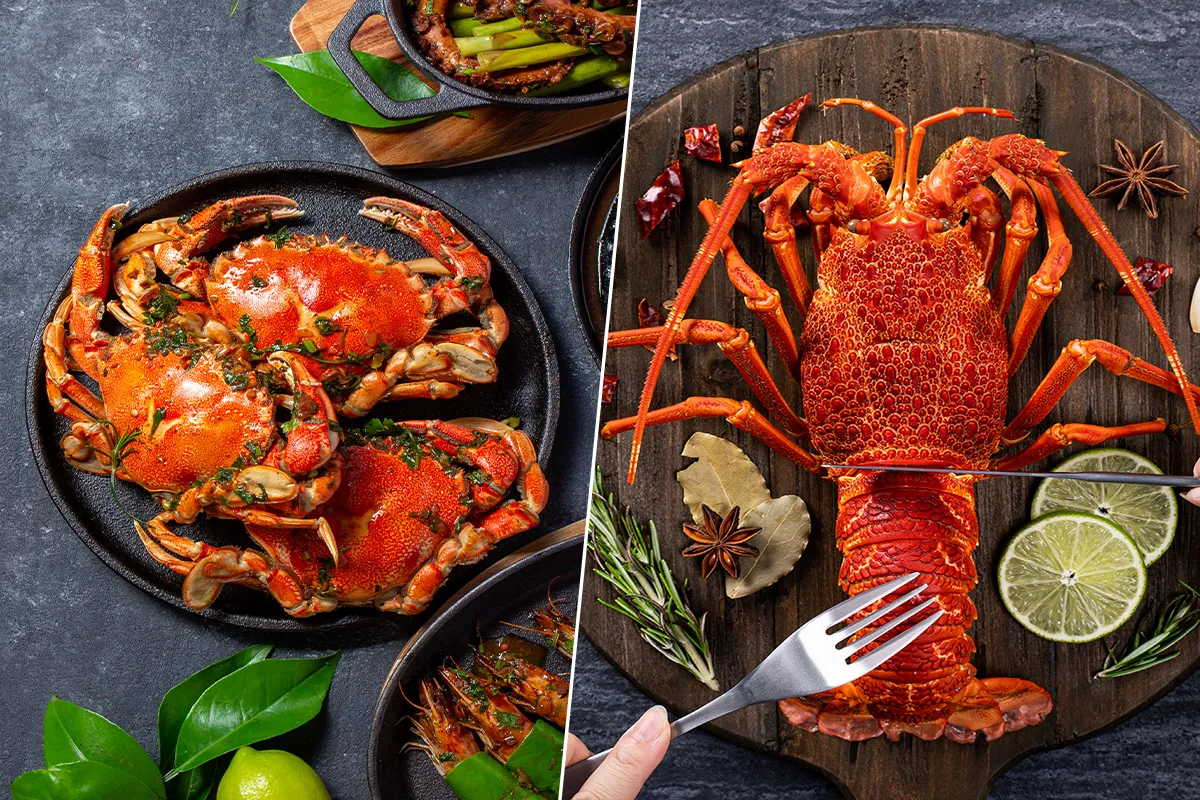
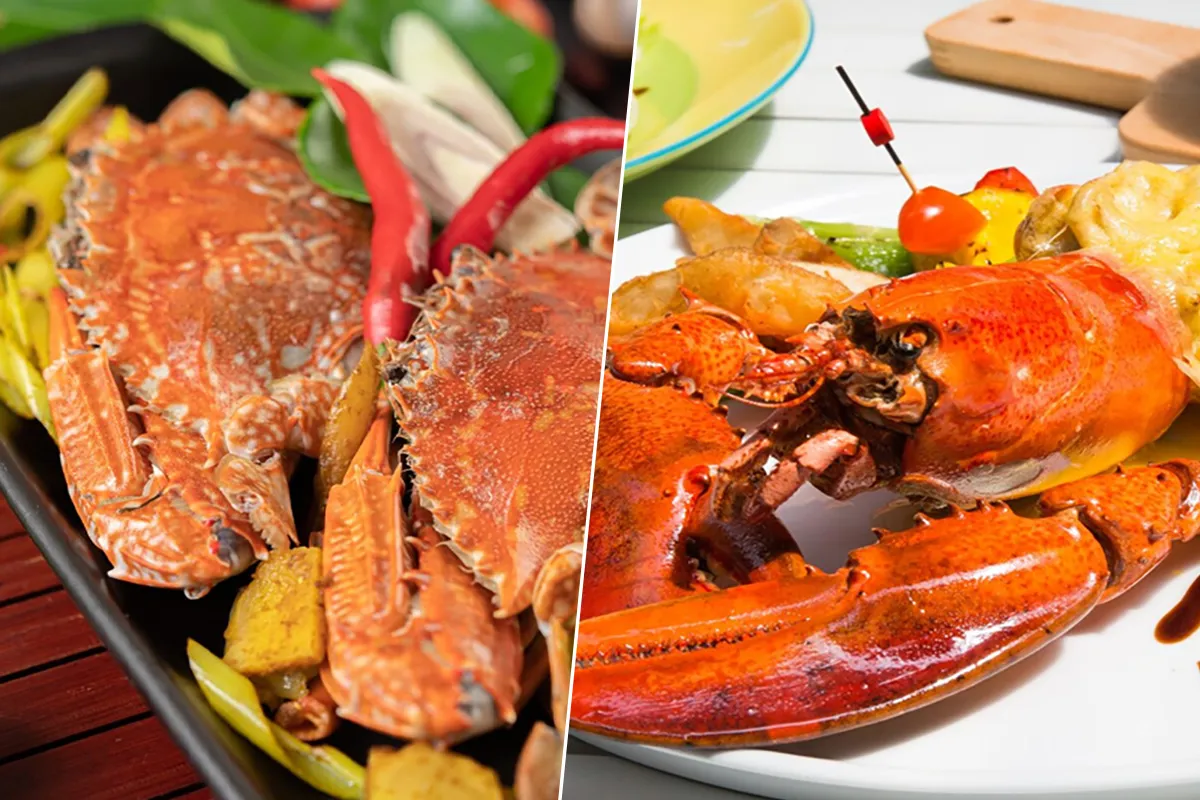
Cooking Methods
Both crab and lobster can be prepared in a variety of ways to suit different tastes. They can be boiled, steamed, grilled, or baked. The cooking method can influence the final texture and flavor of the seafood. Grilling or baking tends to enhance the natural sweetness of crab and lobster, while boiling or steaming may result in a more delicate taste.
Crab meat is sweet and delicate and works well in salads, sandwiches, and soups. Lobster, with its richer taste, is often showcased in gourmet dishes like lobster bisque, lobster rolls, or simply enjoyed with melted butter. By exploring different cooking methods, you can savor the unique qualities of each crustacean.
frequently asked questions
What does lobster taste like?
Lobster has a sweet, rich flavor with a firm texture and is often described as having a delicate balance between sweetness and the sea.
What does crab taste like?
Does lobster taste like crab?
What is the difference between crab and lobster?
Conclusion
In the battle of crab vs lobster, there is no clear winner – it all boils down to personal preference. Both are delectable seafood choices that offer a range of nutrients and can be part of a healthy seafood diet. So, whether you’re team crab or team lobster, understanding their differences can empower you to make healthy food choices. Happy eating!


